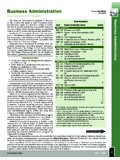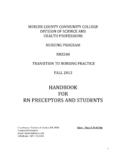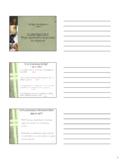Transcription of Therapeutic Communication Techniques - West …
1 Therapeutic Communication Techniques To encourage the expression of feelings and ideas Active Listening Being attentive to what the client is saying, verbally and non-verbally. Sit facing the client, open posture, lean toward the client, eye contact, and relax. Sharing Observations Making observations by commenting on how the other person looks, sounds, or acts. Example: you look tired or I haven't seen you eating anything today . Sharing Empathy The ability to understand and accept another person's reality, to accurately perceive feelings, and to communicate understanding. Example It must be very frustrating to know what you want and not be able to do it . Sharing Hope Communicating a sense of possibility to others. Encouragement when appropriate and positive feedback. Example I. believe you will find a way to face your situation, because I have seen your courage in the past . Sharing Humor Contributes to feelings of togetherness, closeness and friendliness.
2 Promotes positive Communication in the following ways; prevention, perception, perspective. Sharing Feelings Nurses can help clients express emotions by making observations, acknowledging feelings, and encouraging Communication , giving permission to express negative feelings and modeling healthy anger. Using Touch Most potent form of Communication . Comfort touch such as holding a hand, is especially important for vulnerable clients who are experiencing severe illness. Silence Time for the nurse and client to observe one another, sort out feelings, think of how to say things, and consider what has been verbally communicated. The nurse should allow the client to break the silence. Providing Information Relevant information is important to make decisions, experience less anxiety, and feel safe and secure. Example Susie is getting an echocardiogram right now which is a test that uses painless sound waves to create a moving picture of her heart structures and valves and should tell us what is causing her murmur.
3 Clarifying To check whether understanding is accurate, or to better understand, the nurse restates an unclear or ambiguous message to clarify the sender's meaning. I'm not sure I understand what you mean by sicker than usual', what is different now? . Focusing Taking notice of a single idea expressed or even a single word. An example is On a scale of 0 to 10 tell me the level of the pain you are experiencing in your great toe right now.. Paraphrasing Restating another's message more briefly using one's own words. It consists of repeating in fewer and fresher words the essential ideas of the client. For example the client says I can't focus. My mind keeps wandering. The student nurse says, You're having difficulty concentrating? . Asking Relevant Questions To seek information needed for decision making. Asking only one question at a time and fully exploring one topic before moving to another area.
4 Open-ended questions allows for taking the conversational lead and introducing pertinent information about a topic. For example What is your biggest problem at the moment? or How has your pain affected your life at home? . Summarizing Pulls together information for documentation. Gives a client a sense you understand. It is a concise review of key aspects of an interaction. Summarizing brings a sense of closure. Example It is my understanding that your arm pain is a level 1 since you've taken a Vicodin one hour ago. Taking your pain medication before physical therapy seems to help you complete the activities the doctor wants you to do for your rehabilitation. Is this correct? Client responds Yes It really helps to take the medicine before I do my physical therapy because it helps reduce the pain in my arm.. Self-Disclosure Subjectively true personal experiences about the self, are intentionally revealed to another person for the purpose of emphasizing both the similarities and the differences of experiences.
5 These exchanges are offered as an expression of genuineness and honestly by the nurse and disclosures should be relevant and appropriate. They are used sparingly so the client is the focus of the interaction: That happened to me once, too. It was devastating, and I. had to face some things about myself that I didn't like. I went to counseling and it really are your thoughts about seeing a counselor? . Confrontation Helping the client become more aware of inconsistencies in his or her feelings, attitudes, beliefs, and behaviors. Only to be used after trust has been established, & should be done gently, with sensitivity: You say you've already decided what to do, yet you're still talking a lot about your options.. Non- Therapeutic Communication Techniques Blocks to Communication of feelings and ideas Asking personal questions Asking person questions that are not relevant to the situation, is not professional or appropriate.
6 Don't ask questions just to satisfy your curiosity. Why aren't you married to Mary? is not appropriate. What might be asked is How would you describe your relationship to Mary. Giving personal opinions Giving personal opinions, takes away decision-making for the client. Remember the problem and the solution belongs to the patient and not the nurse. If I were you I'd put your father in a nursing home can be reframed to say, Let's talk about what options are available to your father.. Changing the subject Let's not talk about your insurance problems it's time for your walk Changing the subject when someone is trying to communicate with you is rude and shows a lack of empathy. It ends to block further Communication , and seems to say that you don't really care about what they are sharing. After your walk let's talk some more about what's going on with your insurance company.. Automatic responses Administration doesn't care about the staff.
7 Or Older adults are always confused. These are generalizations and stereotypes that reflect poor nursing judgment and threaten nurse-client or team relationships. False Reassurance Don't worry, everything will be all right. When a client is seriously ill or distressed, the nurse may be tempted to offer hope to the client with statements such as you'll be fine. Or there's nothing to worry about. When a patient is reaching for understanding these phrases that are not based on fact or based on reality can do more harm than good. The nurse may be trying to be kind and think he/she is helping, but these comments tend to block conversation and discourage further expressions of feelings. A better response would be It must be difficult not to know what the surgeon will find. What can I do to help? . Sympathy Sympathy focuses on the nurse's feelings rather than the client's. Saying I'm so sorry about your amputation, it must be terrible to lose a leg.
8 This shows concern but more sorrow and pity than trying to understand how the client feels. Sympathy is a subjective look at another person's world that prevents a clear perspective of the issues confronting that person. A more empathetic approach would be The loss of your leg is a major change, how do you think this will affect your life? . Asking for Explanations Why are you so upset? A nurse may be tempted to ask the other person to explain why the person believes, feels or is acting in a certain way. Clients frequently interpret why questions as accusations. Why questions can cause resentment, insecurity and mistrust. It's best to phrase a question to avoid using the word why . You seem upset. What's on your mind? . Approval or Disapproval You shouldn't even think about assisted suicide, it's just not right. Nurses must not impose their own attitudes, values, beliefs, and moral standards on others, while in the professional helping role.
9 Judgmental responses by the nurse often contain terms such as should, ought, good, bad, right or wrong. Agreeing or disagreeing sends the subtle message that nurses have the right to make value judgments about the client's decisions. Approving implies that the behavior being praised is the only acceptable one. Disapproving implies that the client must meet the nurse's expectations or standards. Instead the nurse should help clients explore their own beliefs and decisions. The nursing response I'm surprised you are considering assisted suicide. Tell me more about gives the client a chance to express ideas or feelings without fear of being judged. Defensive Responses No one here would intentionally lie to you.. When clients express criticism, nurses should listen to what they are saying. Listening does not imply agreement. To discover reasons for the client's anger or dissatisfaction, the nurse must listen uncritically.
10 By avoiding defensiveness the nurse can defuse anger and uncover deeper concerns: You believe people have been dishonest with you. It must be hard to trust anyone.. Passive or Aggressive Responses Things are bad and there is nothing you can do about it. Or Being is sick is bad and it's all your fault. Passive responses serve to avoid conflict or sidestep issues. They reflect feelings of sadness, depression, anxiety, powerlessness, and hopelessness. Aggressive responses provoke confrontation at the other person's expense. They reflect feelings of anger, frustration, resentment and stress. Assertive Communication is a far more professional approach for the nurse to take. Arguing How can you say you didn't sleep a wink when I heard you snoring all night long!! Challenging or arguing again perceptions denies that they are real and valid to the other person. They imply that the other person is lying, misinformed, or uneducated.
















